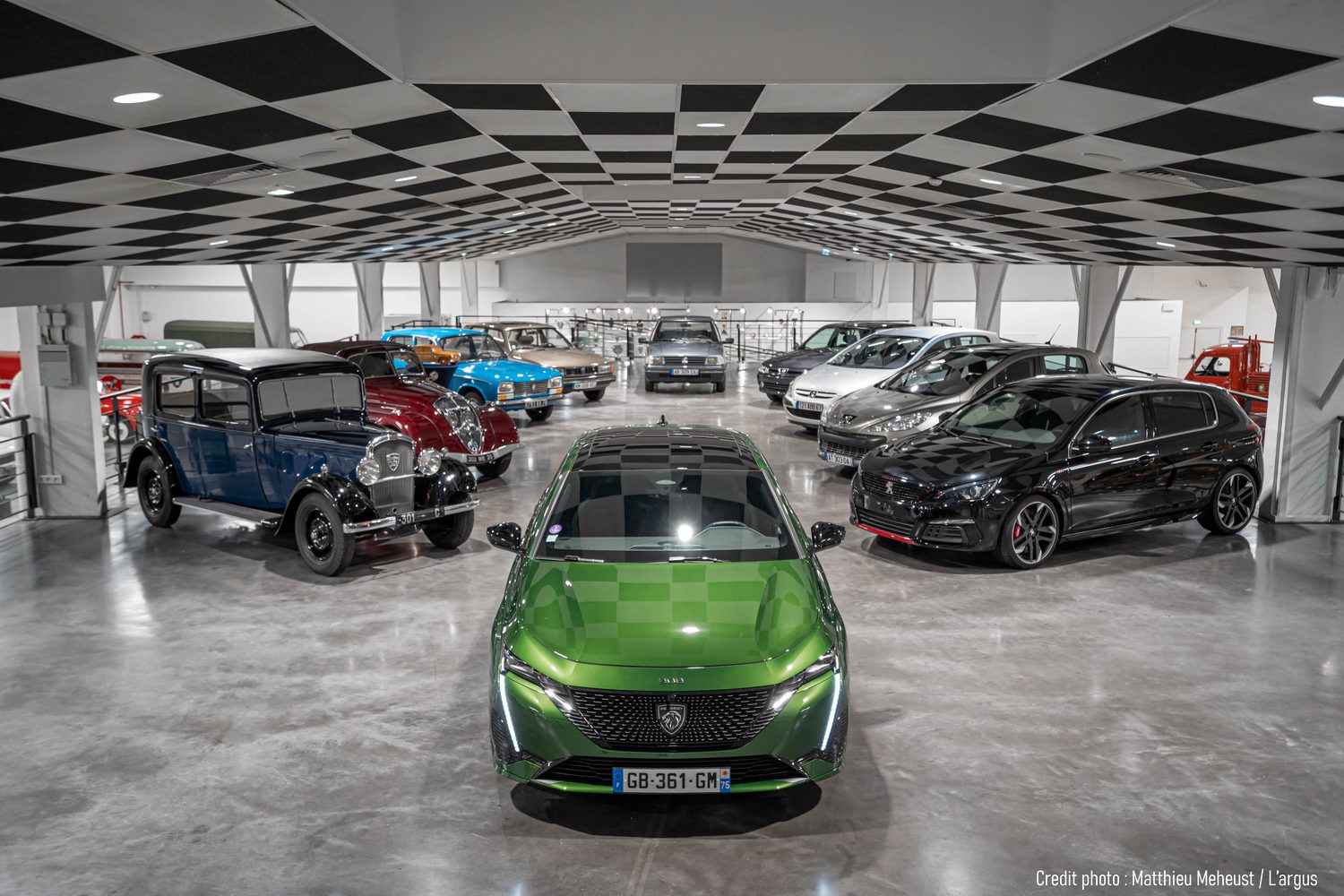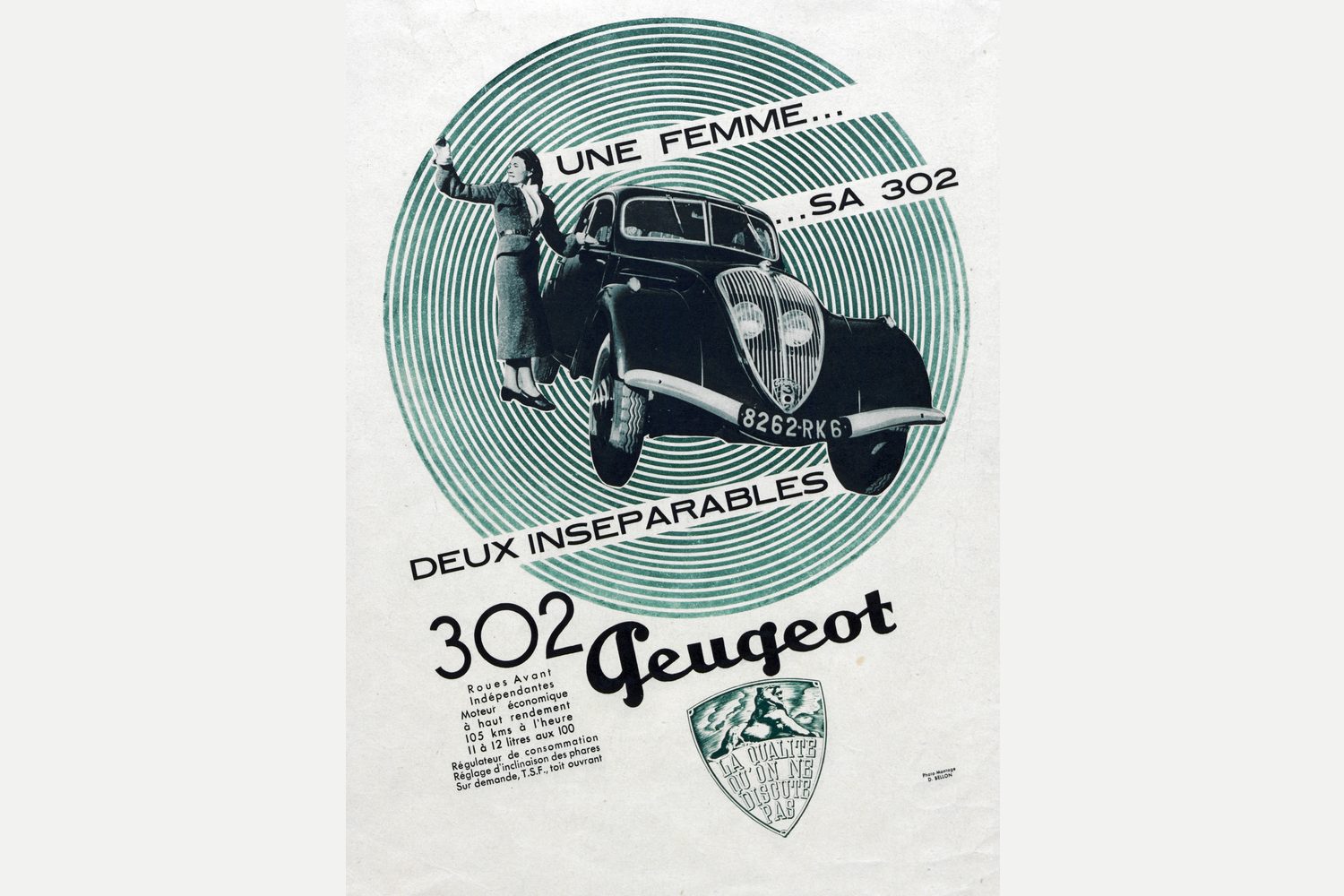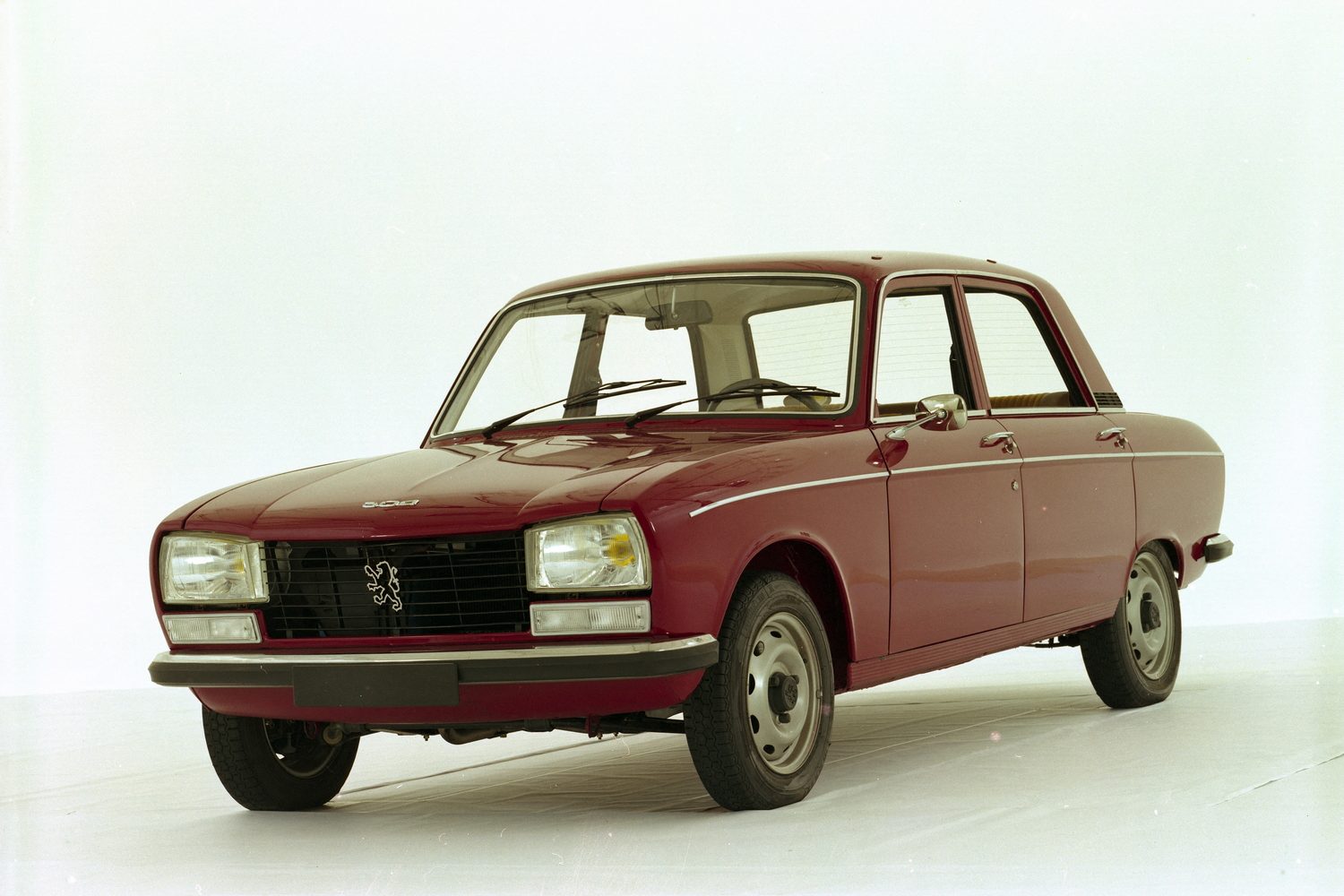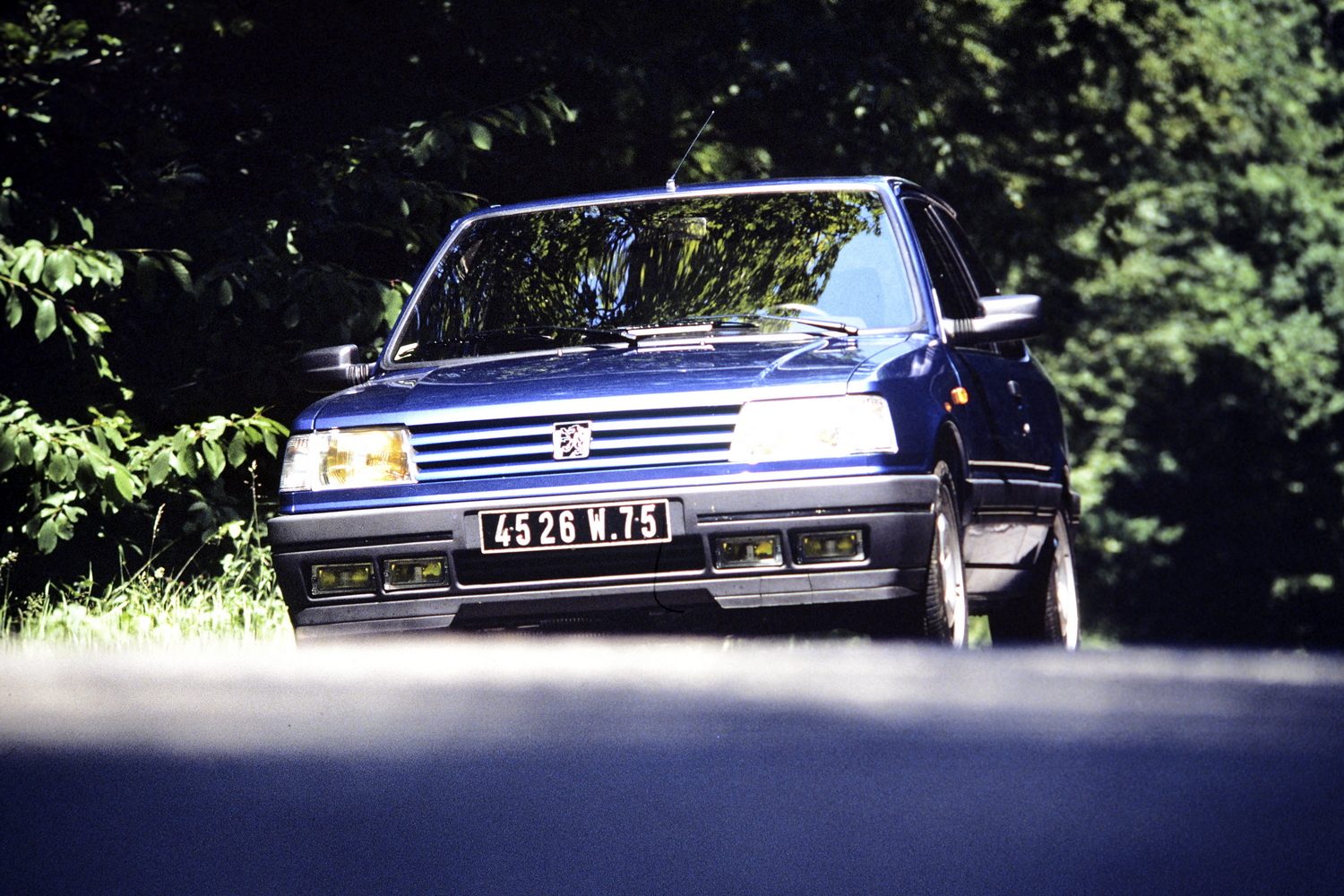It's easy to forget just how long Peugeot has been around. The company name is more than 200 years old, having started as a toolmaker and then gotten into making kitchen goods (you can still buy Peugeot cutlery, knives and its famed pepper grinders, amongst other things). Car making came later for Peugeot, but still pretty early - indeed, Armand Peugeot, scion of the family and the one who pushed the firm into making cars - used to regularly meet with none other than Gottlieb Daimler and Emile Levassor, helping to lay the foundations for the development of the earliest cars in the world.
In the beginning, there was the Peugeot 301
So, with that kind of history behind it, it's hardly surprising that the Peugeot '30-' badge has now hit its tenth generation. The latest 308 is brand new, but it's at the end of a long, unbroken line stretching back to the 1932 Peugeot 301. Designed to be sold as a saloon, coupe, cabriolet and roadster (yes, those are different things), it was powered by a 1.5-litre, four-cylinder petrol engine with 35hp, which doesn't sound much, but was plenty in 1932.
That original 301 wasn't quite as successful as its smaller brother, the 201. Only 70,000 301s were sold, compared to more than 140,000 201s, but the 301 did break some new ground - it was one of the first mass-produced cars to feature independent front suspension, for example.
Streamlining for the Peugeot 302

The upright styling of the 301 couldn't look more 1930s if it tried, but what came next was a genuine revolution. The Peugeot 302, based on the larger, grander 402, was introduced in 1936 and was one of the first production cars to introduce the concept of streamlining. That enclosed, louvred front end looks strikingly modern even now, and redolent of both aircraft and express steam train design of the time. There was more innovation, in that the convertible version of the 302 had a powered folding metal roof - a design feature that wouldn't become commonplace for another 60 years.
That design is still influencing the look of Peugeots today. Former head of Peugeot design, Gilles Vidal told us: "The era of the 402 and 302 cars was super interesting because, at the same time you had those very vertical front-ends on cars, with the lights outside on the sides attached to the fenders. And suddenly a car arrives with the lights inside the grille, and the grille has an inclination and it's super aerodynamic. It was the first attempt for production cars to reach for these aerodynamics and to shift from normality."
That's an inspiration, he says, not in terms of the car's precise style, but in terms of how daring and forward-looking a mainstream car can be. "I look back at what they did with the 02 family, and all that thinking differently, to find a better solution, to progress outside of your era, or further into the future. We should not forget to do that today. So, you have to set your core values for the future, and in that you have to look at energy consumption, at aerodynamics, light weight, at efficiency all through what we do, from materials to the whole eco-system of building a car."
The 'Sochaux spindle,' as the aero-look became known (Sochaux is Peugeot's hometown, and still the location of a major factory and the company's vast archive) wasn't just about looks, either - those 302s could hit 100km/h, a staggering speed for a family car at the time.
Starlet-inspired Peugeot 304

What came next? A major interruption, in the shape of the Second World War. Who knows where that 302 creativity would have taken Peugeot had that terrible calamity not engulfed Europe and the world? Among the other outfalls of the tragedy, there was a 20-year gap between 30- models from Peugeot - it would be 1969 before the new 304 was launched.
It was worth the wait, though. The 304, as with its bigger brother the 504, was designed by the great Aldo Brovaronne of Pininfarina, and it adopted the gorgeous angled headlight design of the 504 - they're either meant to remind you of Sophia Loren, or Brigitte Bardot, depending on which side of the Alps you're looking from...
Peugeot made the most of the 304's rugged underpinnings, spinning off saloon, coupe, cabriolet, estate and utility estate forms, and it was hugely successful - almost 1.2 million were built, and it would stay in production until 1979. These days it's a bargain classic. If you can find a nice, original cabriolet version you could probably buy it for less than €8,000, which is good going for a car with such beautiful Franco-Italian lines. Its 1.3-litre, four-cylinder engine is legendarily long-lived, too.
The enduring Peugeot 305

Speaking of long-lived... Next up was the 305, introduced in 1977, and again a car that would stay in production for many years, all the way up to 1989 in fact. The 305, as with its predecessor, took styling cues from a bigger brother, but in this case, it was the large 505 saloon. Available as an estate and four-door saloon, the 305 also laid down a significant marker in commercial vehicle terms - the van version adopted the Partner name, a name that is still going strong. It was also a diesel engine pioneer, available with the 50hp 1.6-litre GRD unit.
The 305 saloon served as the basis for the VERA experimental programme, designed to improve the fuel efficiency of future generation cars. The first VERA 01 prototype unveiled in 1981 had a 20 per cent reduction in weight and a 30 per cent reduction in aerodynamic drag. Conducted over five years with work extended to engines, the VERA programme had a considerable influence on the development of Peugeot's 205, 405 and then 605 models.
Underrated Peugeot 309
That influence would extend to the 309, of course, which came along in 1985. This was when Peugeot started to align its models more closely with those of the competition. The 305 was halfway between the likes of a Ford Escort and Ford Sierra in size - the 309 was more obviously Escort-sized and shaped, which allowed the subsequent 405 to be a larger, more expensive car than the 305.

The 309 was a car that always lived in the shadow of its smaller brother, the more glamorous 205. The 205 might have been prettier, but the 309 was a more rounded car, with more space inside, and slightly better handling thanks to a longer wheelbase. That paid dividends when Peugeot created the mighty 309 GTi, fitting it with the 1.9-litre, 130hp engine from the 205 GTi. The 309's wheelbase meant that it was a more surefooted car to drive than the somewhat spiky 205, and was often rated more highly than the smaller car by connoisseurs.
Pert looks for Peugeot 306
If the 309 was a little awkward to look at, the car that came next certainly wasn't - the 306. In fact, you'd have to call the 306 the best-looking family hatchback of its time, and it's still a good-looking car if you see one today, especially the rare, but lovely, cabriolet version.
Again, Peugeot was quick to create hot versions of the 306, starting with the 306 S16, with is 155hp engine, before beefing that all up with the 306 GTi-6, with 167hp and a six-speed manual gearbox. The UK and Irish markets would also get the stripped-out 306 Rallye, which saved a little weight by ditching such items as fog lights, air conditioning, sunroof, electric windows and temperature sensor. It was built, partly, in salute to the mighty 306 Maxi rally car, which was busy monstering the stages of the European rally championship at the time. To see a 306 Maxi in full flight, with Gilles Panizzi at the wheel, was really something else - this 285hp, front-wheel-drive car actually had the sheer speed to beat more powerful, four-wheel-drive rally cars in the right circumstances, something that Panizzi delighted in doing on more than one occasion.

Sensible Peugeot 307
Peugeot really changed tack with the 306's replacement, the 307. Out went the 306's slinky, Pininfarina-influenced styling, and in came a more upright, arguably blander look. The design paid dividends under the skin, though - the 307 was hugely roomy and more practical, and the handsome SW estate version could actually be fitted with seven seats, making it unique in the family wagon segment.
First-ever Peugeot 308
That 307 was replaced in 2007 by the first generation of 308 - this was the period in which Peugeot decided to give its cars fixed names, rather than adding a one with each successive model. That 308 carried over some of the 307's upright style, but added to it a more dramatic grille, and also a much higher quality cabin.
Again, the estate SW version was hugely practical, and could be had with seven seats, but the first 308's innovations lay elsewhere. There was the Ecomatique version, which combined a 1.6-litre HDi diesel engine with a clever gearbox to achieve better than 60mpg fuel economy. Then there was the RCZ, an incredibly sexy 2+2 coupe that used the nose and the chassis of the 308, but turned it into a low-slung sports car that was as good to drive as it was dramatic to look at. The ultimate version, the RCZ R, offered 270hp and 0-100km/h in 5.9 seconds.
There was a major change for the next 308, which came along in 2013. This one was lower, sleeker and undeniably more stylish (although, alas, there was no spinoff replacement for the RCZ - we're still holding out hope on that score...). Peugeot actually deliberately made the back seats of this 308 slightly smaller, figuring that families would opt for roomier MPV and crossover models, such as the then-new 3008. Just in case, though, there was also a very handsome SW estate version, without seven seats this time, but with a massive boot and a slightly longer wheelbase that opened up more legroom in the back.
This 308 was also one of the first cars to feature the lightweight, efficient 'PureTech' family of three-cylinder petrol engines, proving that a small capacity engine could provide big-motor performance (especially the 130hp turbo version) with small-engine economy (it helped that base versions of this 308 weighed as little as 1,200kg, thanks to a rigorous dieting regime).

Oh, and the GTi was back too, thanks to a turbocharged 1.6-litre THP engine developing as much as 270hp, and finished in an optional half-black 'Coupe Franche' colour scheme. The second-gen 308 was also one of the first Peugeots to feature the i-Cockpit layout, which shrank down the steering wheel, and raised up the instruments, creating a unique layout that is still going strong today.
2022 Peugeot 308 - going electric

All of which brings us bang up to date, with this - the third generation 308, launching in Ireland in 2022. It's a car that brings the styling of the larger 508 down to a more affordable sector of the market, plus one that expands Peugeot's electrified car offering. Not only will there be two plug-in hybrid versions of this 308 (in 180hp and 225hp forms), but there will also be, by 2023, a fully-electric 308 with a range of more than 400km. It's hard to believe that there's a straight, almost unbroken line running from that all-electric tech-fest back to the simple, upright, pre-war Peugeot 301, but there it is. Ten generations, born out of a single number - 3.









